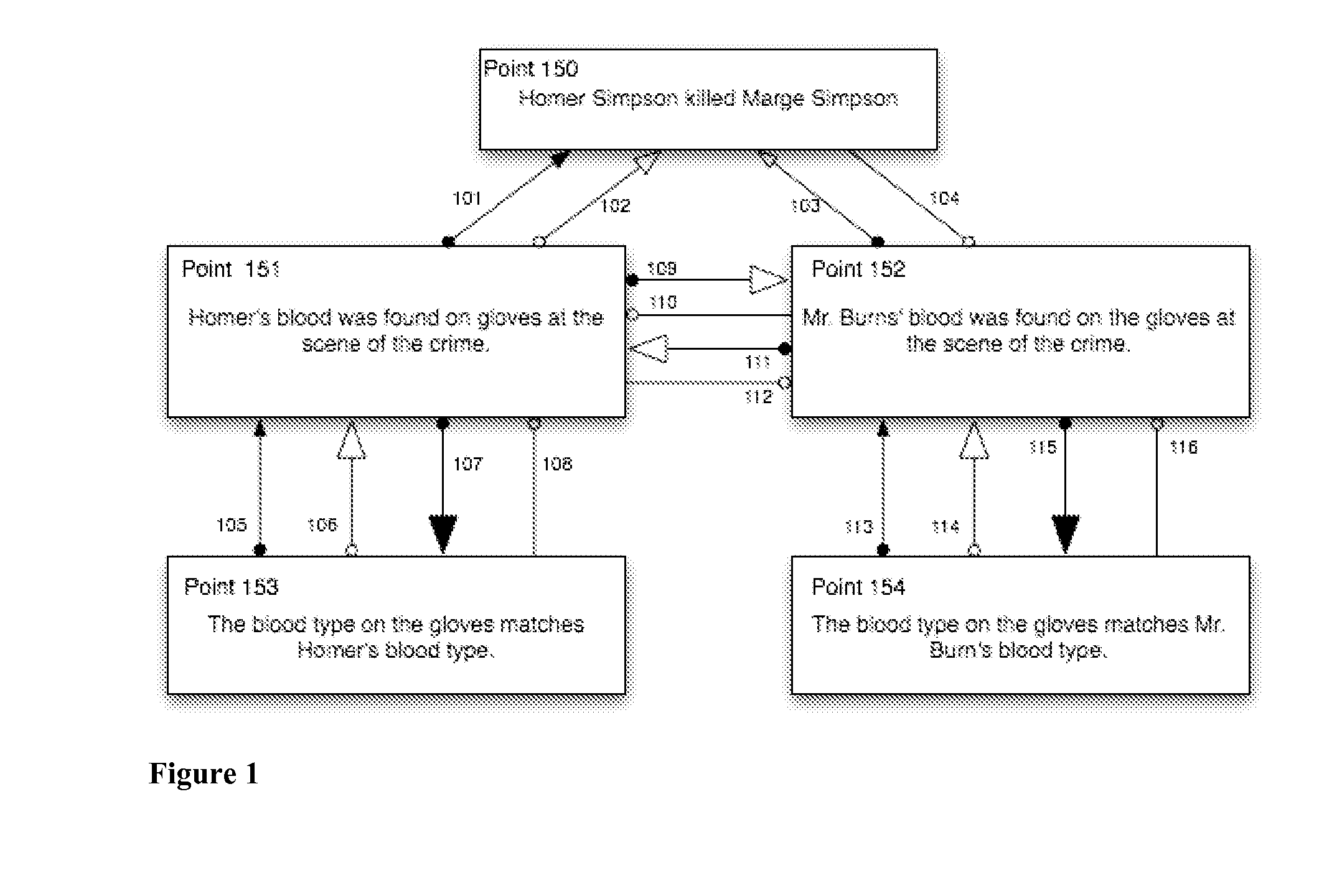Processes and Systems for Automated Collective Intelligence
a technology of collective intelligence and process, applied in the field of collective intelligence, can solve the problems of lack of human common sense, high imperfection, difficult to develop sophisticated ideas, etc., and achieve the effect of easy adaptation and easy automation
- Summary
- Abstract
- Description
- Claims
- Application Information
AI Technical Summary
Benefits of technology
Problems solved by technology
Method used
Image
Examples
Embodiment Construction
[0035]Reference will now be made in detail to various exemplary embodiments of the invention. It is to be understood that the following detailed descriptions are presented for the purpose of describing certain embodiments and examples in detail. Thus, the following detailed description is not to be considered as limiting the invention to the embodiments described. Rather, the true scope of the invention is defined by the claims.
[0036]FIG. 1 provides an example of potential data stored in one potential data structure used by the present invention. In this example, the system is attempting to determine whether or not Homer Simpson killed Marge Simpson.
[0037]Point 150 is provided by a user or by the system. Other users in the community have provided two assertions, 151 and 152, that they believe either support or contradict the assertion that Homer killed Marge. They have created 8 relationships, 101, 102, 103, 104, 109, 110, 111, and 112 among points 150, 151, and 152.
[0038]Point 151 ...
PUM
 Login to View More
Login to View More Abstract
Description
Claims
Application Information
 Login to View More
Login to View More - R&D
- Intellectual Property
- Life Sciences
- Materials
- Tech Scout
- Unparalleled Data Quality
- Higher Quality Content
- 60% Fewer Hallucinations
Browse by: Latest US Patents, China's latest patents, Technical Efficacy Thesaurus, Application Domain, Technology Topic, Popular Technical Reports.
© 2025 PatSnap. All rights reserved.Legal|Privacy policy|Modern Slavery Act Transparency Statement|Sitemap|About US| Contact US: help@patsnap.com



